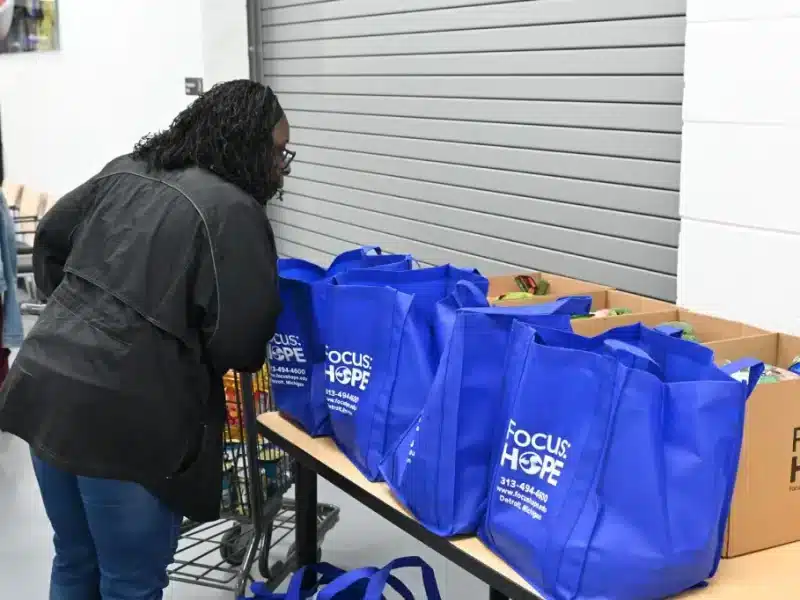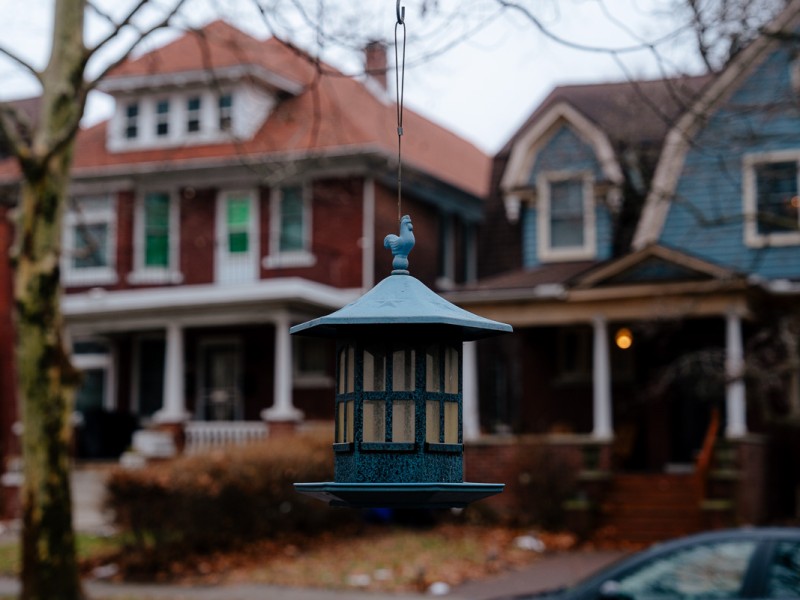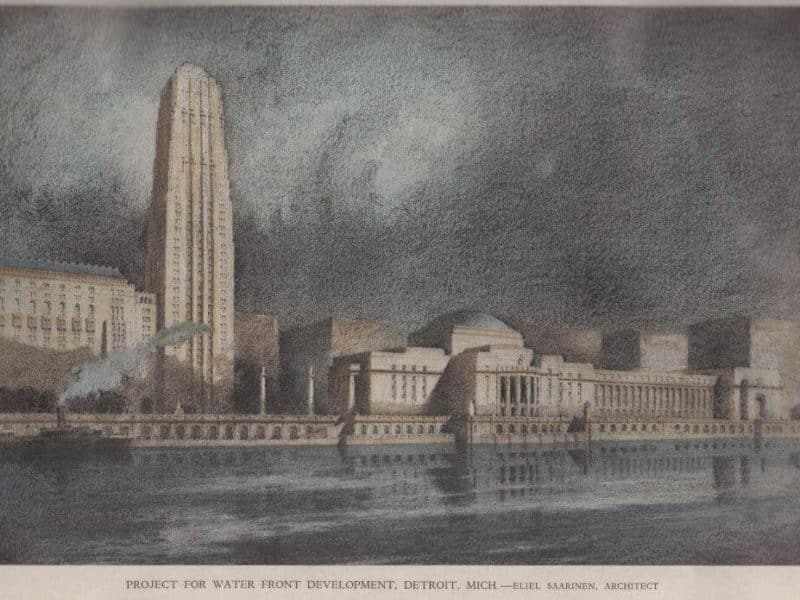TechTown is a People Place
Build it and they will come. That strategy appears to be working in Detroit’s TechTown, where firm creation is helping to create real neighborhood living where virtually none existed before.
The seeds of urban life can be planted in many ways. In Detroit’s TechTown, efforts are underway to nurture real community by attracting people to a place with vast potential but with only the slightest history of neighborhood living.
The first seeds came from the high tech firms that established themselves in the area just north of the Wayne State University campus and in the shadow of the Fisher Building. Now come smaller businesses that can help bring more than technology workers and their clients to the neighborhood. There is a real sense of something growing, says Ramone Crowe, Jr., owner
of The Java Exchange in the Tech One building of Detroit’s
TechTown.
“This is a community in the making,” Crowe says. At street-level, the coffee shop enlivens the corner of a
building that few people know about but could help spur
development for the 12-block area connecting New Center and Midtown.
TechTown has spawned 34 technology businesses, and together with NextEnergy
has begun to create an identity for the area. With Henry Ford Health
System’s corporate headquarters in its midst, a commercial district to
the north and a university district to the south, TechTown is poised
to not only provide a home for the “creative class” in Detroit, but also create
a new urban community in the shells of long abandoned manufacturing
buildings, known today as the New Amsterdam Historic District.
Building density
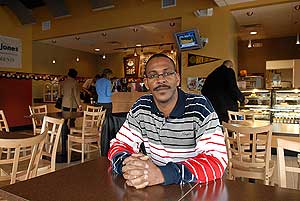 Young people living in major cities are drawn to vibrant, interesting, diverse neighborhoods. Could people living in urban communities also be drawn
Young people living in major cities are drawn to vibrant, interesting, diverse neighborhoods. Could people living in urban communities also be drawn
to a high tech neighborhood to live and recreate? Roy Strickland,
associate professor of Architecture at the University of Michigan and director of the Master of Urban Design Program believes TechTown, of
all the places in Detroit, has that potential.
“With the
Cultural Center, New Center, Wayne State University, College for
Creative Studies, nearby, you have an opportunity for people to rub
shoulders with people like themselves and also people different from
themselves,” Strickland says. “Once
TechTown develops a certain density, it will be the kind of place where people not only want to
work, but where they’ll want to step out of their building, enjoy a cup
of coffee, look at some art, go to a film, hit a museum, go to a
lecture at Wayne State University, or to a Broadway show in the New
Center.”
 Strickland supervised a study group
Strickland supervised a study group
of 14 U-M master-level students and has submitted recommendations to
TechTown on how to develop a community that not only makes sense for
technological entrepreneurial businesses, but becomes a diverse urban
community of its own, drawing people from other areas by its unique
character. Those recommendations were included in a proposed 10-year,
$1.3 billion plan developed by TechTown for the 43-acre site,
including renovation of an additional building for technology
businesses, retail development, faculty and student housing, a new
train station, and a multiplex theater. The plan was funded through a
$90,000 Hudson-Webber Foundation grant. The foundation has already
contributed more than $700,000 to TechTown.
The recently
completed 93-unit New Amsterdam Lofts is the first new residential
development in the area. A second loft development is under
construction on Third Avenue. A small, old residential enclave in the
southwest corner, known to locals as “Positively 4th Street,” sits
precariously at the intersection of the Ford and Lodge freeways.
Freeway expansion plans have threatened the neighborhood for years. The
TechTown plan calls for a community park in the open space that has
been the focal point for the annual 4th Street Fair, a grassroots party
festival that dates back decades.
 Immediately south of the
Immediately south of the
Henry Ford Health System headquarters is the University Prep High
School. The TechTown plan will rebuild the University Prep Elementary
School close to the high school. The Dalgliesh Cadillac dealership is
the most vibrant commercial entity in the area, which also includes the Detroit Children’s Museum, Wayne State offices, a used bookstore, a
firehouse, and the historic United Sound and Film Recording Studio,
among other scattered buildings.
Open space an asset
The U-M
study group visited three similar urban technology developments in
Boston, New York, and Philadelphia. Common to all of them is a
“four-legged stool that supported development,” Strickland says:
commitment from the city, local institutions, the private sector, and
the federal and state governments through special zoning districts, tax
abatements, matching funds, and institutional engagement. “They didn’t
happen in a vacuum,” he says. “They didn’t happen because one person
said they should happen. There was a convergence of public and private
commitment that made it happen. In TechTown you have that.”
Density
of good architecture is often a prerequisite for urban redevelopment.
But the vacant space in the TechTown area may prove to be an asset. “One of the advantages of TechTown is, with its open
space, it can create that next generation of buildings that can absorb
companies as they grow and expand,” Strickland says, “which you don’t have in New York
because of the density and limitation of sites.”
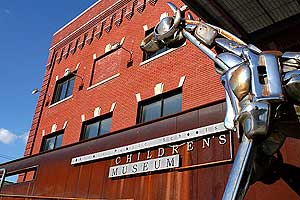 Also,
Also,
open space often translates into green space.
Strickland says green space is important, “but it has to feel welcoming, programmed as carefully
as any building to assure that it’s lively and attractive, and safe.
Green space doesn’t have to dominate the project. Too much open space
can dilute the level of activity in a place.” Aside from the Fourth
Street community park, the TechTown plan has no other allocation for
green space. Also, Third Avenue will be redeveloped into “Ford
Parkway,” which will allow for a more aesthetically pleasing
thoroughfare separating the Henry Ford Health System headquarters from
new residential development bordering the Lodge freeway.
Open
space serves as a strategic connector, moving people
back and forth in a safe, aesthetically pleasing manner. Connection is
critical, says Randal Charlton, Wayne State University
Entrepreneur-in-Residence and founder of Asterand, the first and main
tenant of TechTown. “To have real value, (TechTown) cannot be a
stand-alone, architectural and urban community. It has to be an
outgrowth of Wayne State University,” Charlton says. “There
has to be an absolute seamless interface between Wayne State
University’s long-term objectives and strategic plan and TechTown.
That means that we have to look at it from a different perspective. How
can we build on the many initiatives that have been going for many
years at Wayne State University?”
Growing community
WSU has
established at least 30 companies in which it has an equity position.
Many are located off campus, some out of state. “It makes sense to me
that when a university professor or faculty member has a great new
idea, that idea is incubated here where they get maximum support,” Charlton says. “If it
doesn’t perform that function, it doesn’t mean anything. There’s no
other reason. This is not a real estate development, pure and simple.
It has to be part of the overall university campus and intellectual
climate.” Charlton then asks a rhetorical question — and answers it. “Does that mean to say we can’t have coffee shops, lofts,
multi-use facilities? Absolutely not.”
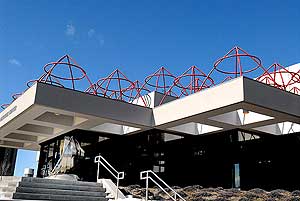 Just
Just
as places like coffee houses help define a local community, you need foot traffic to have a neighborhood. Crowe of the Java Exchange says TechTown is slowly becoming a community
destination. “I’m seeing that with the investment seminars and
poetry readings that we have,” he says. Crowe says he’s
beginning to see university students and office workers from New Center
coming into his shop.
The
Java Exchange is a crossroads where techies, university types,
entrepreneurs and office workers find common ground. Those, perhaps,
are the seeds of the TechTown community.
“Detroit is made up of pockets,” Crowe says. “This could be a pocket that would grow out and take on a life of its own.”
TechTown, says Strickland, is one of Detroit’s healthiest areas. “It has
the four necessary ingredients for the future of the American city: It
has a big university providing education. It’s got two major hospitals
and a medical school. It has technology, and it has the
cultural district. If you put a big rectangle extending from the Ford
Hospital complex and New Center through TechTown, you’ve got a
healthy city.”
Dennis Archambault is a Detroit-based freelance writer.
Photos:
Next Energy
Ramone Crowe Jr. of the Java Exchange at Tech One
Wayne State University’s Welcome Center
University Prep High School
The Children’s Museum
College for Creative Studies
All Photographs Copyright Dave Krieger
